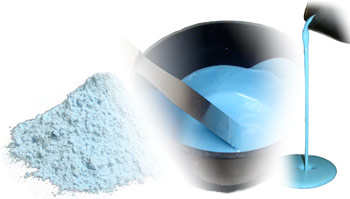Recommendations for the use and handling of the gypsum
To make the mixture it’s best to use a rubber container and a stainless steel spatula so as to be able to mix thick consistencies.
Steps to produce a good mixture
- Place the right amount of water in the container following the water to powder ratio. Remember, the less water added to the mixture, the stronger it’ll be once it has set.
- Mix vigorously for 1 minute if done manually or 30 seconds if especial equipment is used. Do not add extra water or powder once you start mixing because this makes the material weaker once it has set.
- Once the mixing is done, place the material before it sets where you want it to harden and avoid moving it after that since any motion generated while it’s setting can cause failures and weak zones.
- It’s best to wait for the gypsum to set completely before working on it.
- The gypsum achieves its maximum hardness and resistance after 48 hours, however this time can vary depending on the relative humidity in the air. For common uses it’s possible to work on the gypsum an hour after it set, remembering that it’s hardness will keep increasing during the following hours.
Storing the gypsum
The tool used to get the right amount of powder needs to be dry, never place wet objects in the powder. The gypsum powder should remain in its closed container at all times and away from walls, floors and other places with humidity. Humidity is a critical factor that can make the gypsum lose some of its useful properties.
Alfa plasters that have just been produced have a higher setting time than those that have been in storage for a long time. This is the only property that changes during the storage in optimum conditions. It’s dimensional stability, compressive strength, color, etc. Remain the same.


